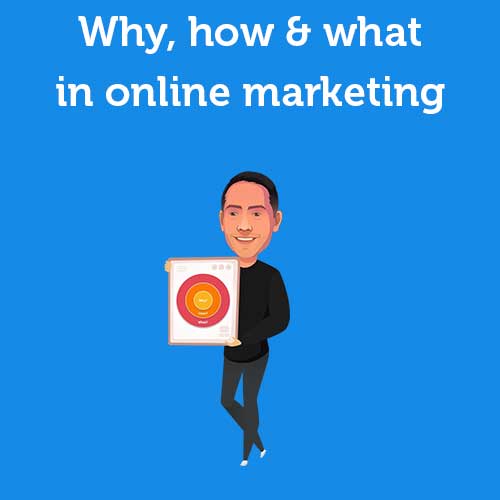Menu
Table of contents
Unfortunately, you come across few blogs that provide tips for affiliate advertisers. For the other side. For the website or web shop owners who want to bring in more sales with affiliate marketing.
So it seemed high time to write a blog for that too.
Tip 1: Know the different affiliate revenue models
Before getting started with affiliates, think carefully about what revenue model you want to adopt.
The most common method is that you pay a fee to the publisher when someone makes a purchase within your website. This is also known as Pay Per Sale (PPS).
But there are other methods as well:
- Pay Per Lead (PPL): you pay a fee when you bring in a lead. This can be a subscription to a newsletter or a request for a quote, for example.
- Pay Per View (PPV): you pay a fee for the number of times a banner has been viewed. This can be done through the Google Display network, for example.
- Pay Per Click (PPC): you pay a fee when someone clicks on the affiliate link.
Carefully consider which revenue model suits your business, your marketing strategy, your margins and your publishers. Pay Per Sale (PPS) is a good and safe revenue model to start with. We have had the best experiences with it ourselves!
Tip #2: What affiliate marketing programs are out there?
There are several major players in the world of affiliate marketing. Both nationally and internationally.
Which party suits you best? That depends entirely on your niche, desires, requirements and goals. Unfortunately, you really have to find that out for yourself.
However, we can share with you the affiliate parties we have experience with:
- Daisycon
- TradeTracker
- Awin
- PayPro
- Plug & Pay
- Tradedoubler
- Bol.com
- Amazon
Tip 3: Put a page on your website indicating that you have an affiliate program
It is often thought that new publishers find you by looking within the affiliate network. This is true, but there is another way to get new publishers.
In fact, you can actively engage in this yourself. And one method that works well but is often forgotten is to have a page within your website indicating that you are working with publishers.
Here you can specify your commissions, what kind of publishers you are looking for, your terms and conditions and more.
After all, customers who buy something from you may also be publishers or become publishers in the future.
Tip 4: Be clear in your terms and conditions towards publishers
Within the various affiliate networks, you can specify what your terms are. Take advantage of that!
This, in fact, prevents problems at a later stage.
For example, indicate here that:
- Certain products should not be used (because no one else sells the product)
- Certain banners should or should not be used
- Shopping campaigns may or may not be allowed
- Google Ads campaigns may or may not be allowed.
Tip 5: Determine the commission per publisher
One publisher is not the other. Where some may only include your feed in their website, others will write complete blogs about you, review your business, include you in their feed, share content on socials and include you in their newsletter.
Capitalize on that with commissions. Reward publishers who are really committed to your brand. After all, these are the affiliates that score best and get you the most revenue.
You would want to earn more if you work hard and produce more, wouldn't you?
Tip 6: Make sure the publisher's website is quality and relevant
When choosing a publisher, many things are important. But the most important are quality and the relevance of the website they will promote you on.
First, the niche or topic must fit your target audience. So a website about bicycles will not fit your shop for polo shirts.
Except ... when the target audience is exactly the same and the website is not just about bikes! For example, it could also be a lifestyle website for men who fall into your target audience.
I think you get the point I'm trying to make here.
Besides relevance, quality is very important. And when we talk about website quality, it actually involves three aspects:
- Quality of the technology used to create the website (think, for example, loading speed)
- Quality of the content that is on the website (is what is on the website correct, is it all relevant and does it fit your mission and vision)?
- Quality of inbound and outbound links within the website (how long has the website been around and does it have many good links or are they bad backlinks?)
Tip 7: Provide good promotional materials
Now that we've had all the tips "up to the door," let's move on to helpful affiliate marketing tips for when you've actually started working with publishers.
And we start with having good promotional material. Of course, the publisher would like to promote your products in a sidebar, in a newsletter, in a blog or in any other expression and they need good material for that.
That material can of course be a simple affiliate link, but it is of course much more effective when the publisher gets nice banners showing the product, any discount and an action button.
If you make it easy for your publishers to promote your products, they will be more likely to do so. Especially when your competitors don't provide good material.
In addition to banners, the aforementioned product feed is also incredibly important. After all, that is the file that publishers can add to their website, so that they can add all your products to their website without too much work.
And that, of course, is what every publisher and every advertiser wants.
Tip 8: Reward publishers who do well and make sure you keep in good touch
Once you get started, you soon notice that there are a small number of publishers that do very well and provide a large portion of your affiliate marketing revenue.
The well-known 80/20 rule applies here.
That 20% who are doing very well, you have to keep them very happy. Or sometimes make them even happier. And you can do that by rewarding them.
Suppose that Publisher Pietje normally always provides €1200 in additional sales. Then agree, for example, that Pete gets an extra bonus at €1500. This could be a one-time bonus, an increase in commission, a free product or something completely different.
How would you like that if you were Pete? Fantastic right!!! Then I would also do some extra meters and try extra things to get to that amount.
Tip 9: Remove duplicate sales
It can happen that somewhere in the process something goes wrong, causing a payment within the affiliate marketing program to be registered twice (this can be due to your website, but also to the affiliate partner you have chosen).
Of course, you don't want that at all. So when the same amount comes in shortly after each other, you have to check this manually. Check in your CMS whether it really was two payments (but that almost never happens) or whether it was one payment after all.
Then you can reject the sale within your affiliate marketing program.
Tip 10: Disapprove or approve transactions
When someone makes a purchase through one of your publishers, that amount is not debited the same day. This is because you have a moment to reject or approve the transaction.
Approval often happens automatically after X number of days. That's not very exciting. What does deserve your attention, however, is disapproving transactions.
If someone has made a purchase through the link from one of your publishers, but then returns the product, the commission will still be debited.
You then have to reject this transaction to make sure you don't pay commission on this. That would be very crazy and not good for your profits.
Tip 11: Answer tickets
Within the affiliate marketing programs mentioned earlier, almost everywhere there is a feature built in that allows you to communicate with publishers. This is often called a ticket system.
For example, publishers can ask questions about campaigns, raise issues within your feed or ask if you would like to work with them.
Make sure you keep a close eye on the tickets and respond quickly! There are often some pretty urgent things in here.
Tip 12: Seek out and invite new publishers
Most of these tips are things you need to do monthly or sometimes weekly. So too is finding and inviting new publishers.
Every day, every week and every month there are new publishers joining. Affiliate marketing has been something that has been around for a long time and is still very popular today.
So start looking for the gems in the publisher list every month and send them a personal message stating why you would like to work with them.
And then don't send them a simple message of "hey, our markets match so shall we work together? No, immerse yourself in the company, website and person behind the organization. That increases the chances of a good collaboration!
Tip 13: Periodically check your feeds
I've talked about the feed before. The feed is nothing but a list of all your products including all features and important content such as text and photos.
Publishers can use your feed that allows them to have all your products in your website in one fell swoop. This is perhaps one of the most important parts of affiliate marketing.
And since that feed is so important, you should also check it periodically! It could be that you, your developer, your website or someone else made a mistake that caused the feed to not work or only work halfway.
Of course, you never want that.
Tip 14: Tune monthly promotions with your publishers
The last tip of this list of affiliate marketing tips is perhaps the biggest open door, but also one of the most important from the list.
Make sure you have monthly contact with your (most important) publishers and also tell/share what you are going to do next time. Is there a sale? Share that with them! Is there a new collection coming up? Share that with them!
You could almost think of the publishers as a customer or employee. You want to include them in your journey and inform them of the most important developments, so that they can act on them themselves ... and bring you more sales.
This article was written April 21, 2021 and updated August 21, 2023.
What is a website structure?
A Web site structure refers to the deliberate organization of pages within a Web site, arranged for logic and ease of use.
How to set up a website structure?
Analyze keywords, evaluate current pages and data, consult stakeholders, foresee future needs, create a mind map, choose relevant pages, assign keywords, build URL structure, complete document and prepare SEO migration.
Why optimize URL structure?
An optimized URL structure improves user experience, navigation and SEO performance, leading to better search engine rankings and greater website engagement.











Written by: Daniel Kuipers
Daniel is the founder of Online Marketing Agency. He constantly scours the Internet for the latest gadgets and tactics and blogs about them in understandable language. Well, sometimes.